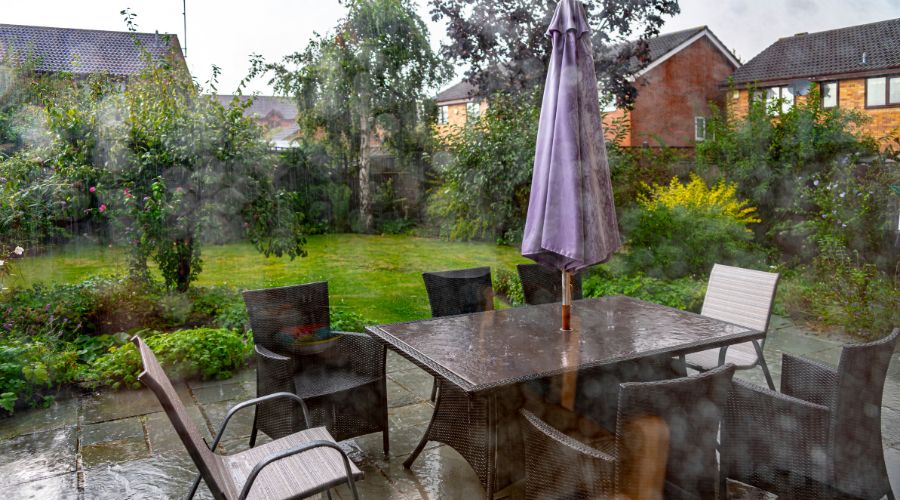Spring has sprung, which means less time spent indoors and more time spent outside in your garden! As you would spring clean to rejuvenate your home after a bitter winter, you can give your garden a spring clean to prepare it for the warmer season.
Gardens are regularly overlooked in winter, but a good refresh can help get your garden ready for spring and the coming summer.
Ready to get started? Discover how to spring clean your garden with our handy gardening checklist!
Our checklist covers the following points:
- Assess available space
- Routine cleaning tasks
- Lawn maintenance
- Pruning and clearing
- Introducing plants and vegetables
- Hardscaping maintenance
1. Assess Available Space
Before you can decide what needs to be done in your garden, you’ll need to assess the space and think about the results you want to achieve.
Do you have a large space that will take some time to spring clean, or do you have a small garden that’s easier to maintain?
Look at your garden layout and consider what you want to modify or take away. Do you want to add new elements, like planting areas or garden furniture? Are there any surfaces that need a clean or have lost their brilliance?
Assessing your garden space and devising a rough plan can help you stay on track and avoid mistakes later.
2. Routine Cleaning Tasks
Aim to finish routine tasks before you start the heavy-duty spring cleaning garden jobs. Here are some common examples:
- Sweep up foliage and leaves from the colder months, then transfer them into your compost bin.
- Go through your greenhouse and shed. Remove any clutter and organise your tools to simplify your space. Make sure you place your garden tools in an easily accessible area.
- Remove any weeds that have spread over your garden space. Try to remove as much as possible, as you’ll have less to clean up in summer.
- Identify and mend any broken areas around flower beds.
- If you want to keep your bird feeders up throughout the year, take them down and wash them thoroughly before re-filling and re-hanging them.
3. Lawn Maintenance
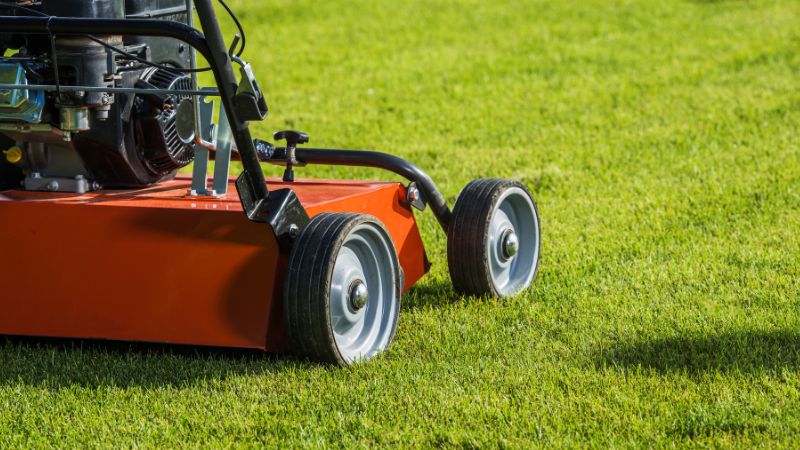
Most garden lawns will need some form of maintenance after a long winter. Here are some things you can do to your lawn to get your garden ready for spring.
- Start mowing your lawn when the grass starts growing, in dry, mild conditions. For your first mow that spring, raise your mower’s blades around 0.5cm higher than it’s typical cutting level.
- Locate any moss around your lawn and remove it with a rake. This will help healthier grass develop on your lawn.
- Feed your lawn with a lawn fertiliser mix. This strengthens your lawn and gives it a vibrant green colour for the coming summer.
- Even out your lawn’s sides to give it a neater appearance. Use a spade and straight board to guide you across the edges.
4. Pruning and Clearing
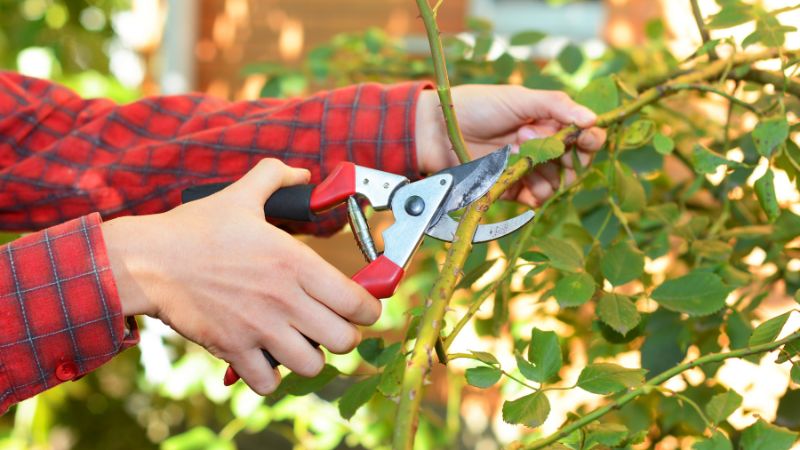
The RHS states that proper hygiene is an important component of disease control inside a garden. Dead or infected plant material should be disposed of quickly and carefully to prevent disease spreading.
Early spring is a good time to prune diseased, damaged, or dead stems. Other than preventing disease, pruning makes way for colourful flowers to grow and get your garden ready for spring.
A pair of secateurs or a new garden knife can help you remove stems easily. Try to remove any dead or broken stems when you first notice them. These lure in insects and increase the chances of disease affecting them.
You can cut summer blooms, like fuschia, to their base, as this helps lots of new buds flower throughout spring and summer. Early spring flowers, like rhododendron, are best pruned when they finish flowering, in late spring.
5. Introduce Plants and Vegetables
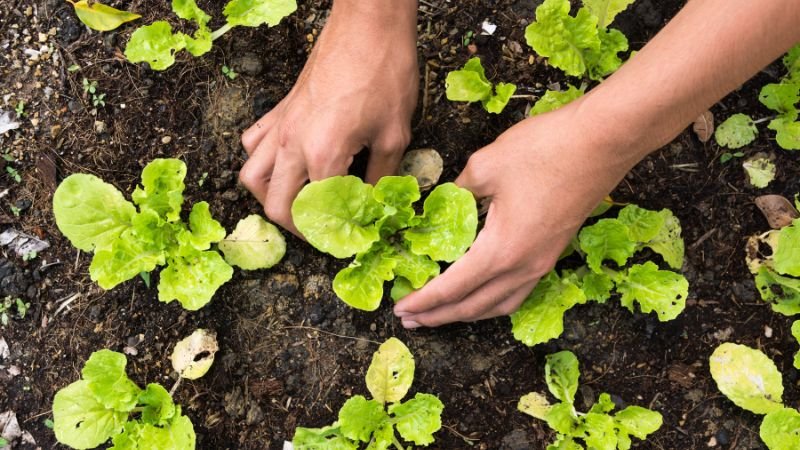
A good spring cleaning garden tip is to introduce plants and vegetables to your space. There are lots of colourful options to choose from, like poppies, sunflowers, and petunias, which can attract pollinators, like bees and hoverflies.
It’s thought that around a third of worldwide food production relies on animal pollination, but up to 90% of this job is done by honeybees. Introducing flowering plants to your garden can help bees and other pollinators carry out their role, and will also make your garden come alive.
Summer blooms, like gladiola and lilies, are best planted around early spring. This is also a nice time to begin planting bedding foliage for summer pots and borders.
The warmer months are also ideal for sowing fruit and vegetables. Early spring is good for sowing tomatoes, chillies, and aubergines in indoor pots. Parsnips can take a while to grow, so plant these as soon as the soil starts to get warm,
You can work on lettuce, peas, mangetouts and celery in your greenhouse, or begin an early group of carrots beneath cloches or fleece.
Find out more about planting spring flowers with this post on spring garden design ideas.
6. Hardscaping Maintenance
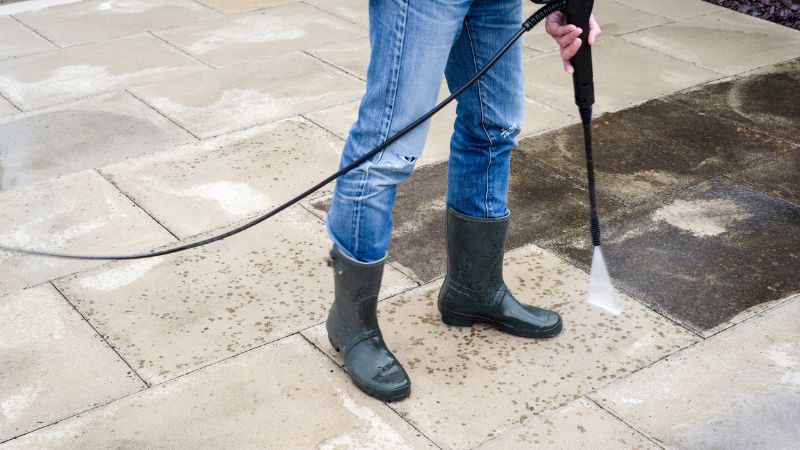
Hardscapes, like patios, fire pits, or landscaped walkways, can develop wear and tear during the colder months. Materials like concrete and stone can attract dirt, mould, oil, grease, and mildew. Failing to clean hardscapes can lead to stains that become extremely hard to remove later on.
You can clean your hardscapes in several ways depending on the level of dirt affecting them.
Spot cleaning and bleach rinses are best for lighter stains, like moss, weeds, or motor oil.
Acid washes can rejuvenate hard surfaces that have lost their lustre, while surface cleaner tools can help clean larger areas. You can also use pressure washers to remove tough dirt stuck between pavers.
Clean any outdoor furniture surfaces so they are ready for summer. Sugar soap and a scrubbing brush can remove stains from wooden furniture, but metal surfaces work best with a water and baking soda solution.
There we go! We hope this post has given you some guidance on how to spring clean your garden.
If you’re not sure where to start, let the professionals help you!
Not only are they well-versed in coming up with bespoke designs that make the most of your available space, but they are experts in what they do, so you can have peace of mind that your garden is in the best hands.
Learn more about the benefits of hiring a professional garden designer here.
At Raine Garden Design, our award-winning designer, Raine, has over 23 years of experience in landscape design and an in-depth understanding of the design and construction process.
To learn more about our garden design services at Raine Garden Design, get in touch at studio@rainegardendesign.co.uk or on 07702 042559.
Written by Rosh for Raine Garden Design.

